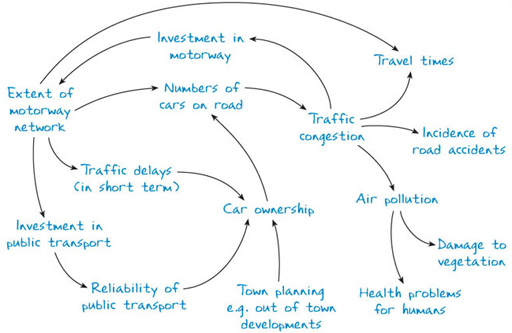4 Your experience of decision making and environmental decision making
4.1 Becoming aware of your actual and potential environmental decision making
In this section you will begin to locate yourself within the overall context of environmental decision making. By considering critically your own experiences of environmental issues in different contexts and at different levels you will begin to consider how people’s experiences influence their decisions and actions and how this can be used to positive effect – a theme that will recur throughout the course. Try the following activity now to begin taking stock of your own environmental decision-making experience.
Activity 16 Your involvement in environmental decision making
In what contexts do you think you are involved in environmental decision making? Give one example of how you are involved individually and one example of how you are involved as part of a group. In both cases explain why you consider them environmental decisions.
Discussion
The contexts of work, home, community and leisure are the main ones in which I make decisions that have effects on my environment.
One example of my environmental decision making as an individual is that I make purchasing decisions about consumables (food, drinks, household chemicals, etc.) and durables (clothes, furniture, electrical goods, etc.). This is environmental decision making because natural resources are used to make these goods, in their distribution and in some cases their use. Some of the resources used are non-renewable (although I cannot always tell to what degree because the labels on the goods do not give me enough details: for example, what energy is used to get them to me). Many of the goods are also wrapped in packaging which will become waste.
An example of my environmental decision making as part of a group is at work, where the T863 Course Team made a decision to use electronic conferencing instead of circulating papers, and in some cases in place of meetings. There were several reasons for this decision which included: speed of communications, suitability of conferencing for the tasks being undertaken (such as considering and contributing to ideas), making more effective use of meeting time, reducing use of paper and decreasing time spent photocopying. The decision was not, therefore, made primarily on environmental grounds but it had an environmental dimension, so I consider it environmental decision making.
It would be simplistic to say that the environmental effects of our decisions were all ‘positive’ effects in that some members of the group still choose to print out some of the messages, and it may mean that we use our computers for more time than we would otherwise. The decision to go for conferencing was a group decision but I still have choices I make individually about how I use the conference, and hence about the environmental effects of my actions.
As individuals it is difficult to understand the nature and scale of the impacts of our decisions, and what we should do about these impacts, because they are part of a large and complex web of interconnected decisions and actions. It is also sometimes dif. cult to see how the actions of one individual can make a difference, particularly when decision-making processes seem remote and there seems little opportunity to get involved. Figure 9, which shows some factors affecting traffic growth, provides an example.
Nearly all decisions are made by individuals, even when in groups or organisations. We also have multiple roles in society where we are involved in environmental decision making, as consumers, citizens, parents, workers and voters (though not always with awareness), so our decisions and actions can and do make a difference. There are more opportunities to get directly involved in environmental decision making than many people think, although they are not always apparent. The traffic growth example in Figure 9 for instance suggests to me that if I wanted to affect the situation, I could consider how I might, with others, encourage investment in public transport and get involved in improving town planning, as well as reconsidering my own car ownership and avoiding congested times for traffic.

